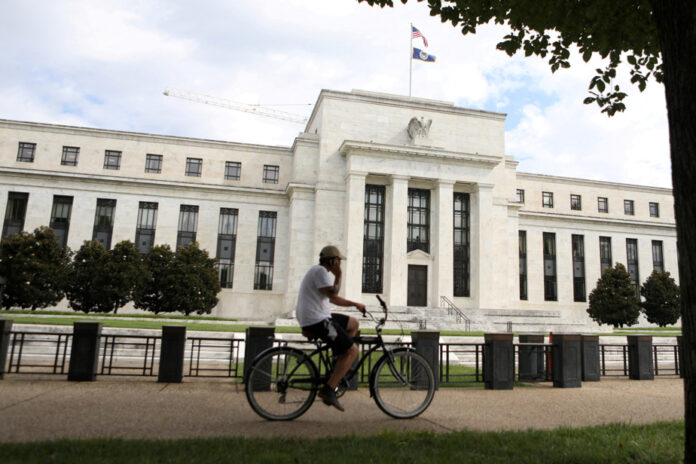(Washington) The Fed could announce that it is maintaining its rates at their current level on Wednesday at the end of its meeting, however leaving the door open to possible additional increases, the dilemma still being to slow down inflation without cause the economy to wobble too badly.
Falling inflation, looming labor shortages that are beginning to ease, softening consumption: the ingredients are there for the American Central Bank to maintain its rates in the current range, from 5.25 to 5.50%. .
The decision will be announced on Wednesday at 2 p.m. in a press release, which will be published following the meeting of the Monetary Policy Committee (FOMC) which began on Tuesday morning.
A surprise is unlikely, according to market participants, almost all of whom expect to see rates remain stable, according to the CME Group assessment.
Does this mean that the cycle of rate increases, which began in March 2022 in the face of very high inflation, is over? Or are additional increases expected in the coming months?
The Fed should be careful not to be assertive on this issue, and seems more inclined to be cautious. Indeed, if markets take the end of rates for granted, financial conditions could become less restrictive, and prices could start to rise again.
“The message from the Fed will be that higher key rates will remain on the table until the economy visibly slows and inflation approaches 2%,” comments Steve Englander, head of macroeconomics. American for Standard Chartered and former economist at the Fed, in a note.
“The FOMC will be ready” to raise rates further in the future “if necessary,” he believes.
The press conference that Fed President Jerome Powell will hold, just after the publication of the press release, at 2:30 p.m. will therefore be particularly scrutinized.
As well as updated economic forecasts, in terms of GDP growth, inflation, employment, and changes in rates.
Since March 2022, the Fed’s main rate has been raised 11 times, a very rapid pace, intended to curb inflation that was at its highest in more than 40 years.
This has since slowed down significantly, despite further acceleration this summer. It stood at 3.7% year-on-year in August, according to the CPI index.
The Fed favors the PCE index, which it wants to bring back to around 2%, and in July was 3.3% year-on-year. August data will be released on September 29.
The situation also seems to be gradually rebalancing on the job market, after two years of labor shortage, which caused wages to soar. The unemployment rate rose to 3.8% in August, driven by an influx of new workers, which should help cool inflation.
As for consumption, the engine of American economic growth, it has been vigorous since the start of the COVID-19 crisis, fueling high inflation, but it seems to be showing first signs of weakness.
And as early as October, millions of Americans will see their purchasing power further reduced, as they will have to start repaying their student loans again, after a two and a half year break linked to COVID-19.
Furthermore, several clouds hang over the world’s largest economy.
Starting with the unprecedented strike started on Friday by the powerful automobile union, the UAW, among the “Big Three” American manufacturers, GM, Ford and Stellantis (resulting from the merger of the French PSA and the American Chrysler) .
Another threat is that of “shutdown”, a paralysis of the federal administration, if Republicans and Democrats in Congress do not agree on the government budget by the end of the month.
The Fed is meeting in full this week for the first time since February, after the departure of former Vice-President Lael Brainard, who left to lead the White House team of economic advisers.
She is replaced by Philip Jefferson, one of the Fed’s governors, while Adriana Kugler, previously the US representative to the World Bank, takes the vacant governor’s seat, becoming the first head of the original Fed Hispanic.














